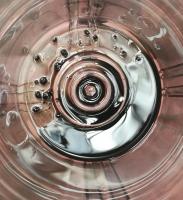Speed limiters head raft of safety rules due to be introduced from 2022
A range of new vehicle safety features, to be fitted as standard on all new cars, vans, lorries and buses sold in Europe from 2022, has moved a step closer after a provisional EU deal was reached in Strasbourg.
The new rules include requirements for new technologies, such as Automated Emergency Braking (AEB) and over-ridable Intelligent Speed Assistance (ISA), to be fitted as standard for the first time.
ISA uses GPS data and traffic sign recognition to locate the vehicle and the current road speed limit to prevent the driver from speeding. However, it can be overridden by accelerating hard, for overtaking manoeuvres, while the European Transport Safety Council has called for all vehicles to have a switch so ISA can be turned off during a phasing in period.
New lorries will also be required to have improved levels of ‘direct vision’, based on Transport for London’s Direct Vision Standard, to give drivers a greater chance of seeing vulnerable road users such as pedestrians and cyclists around the vehicle.
Furthermore, the legislation aims to tackle drink-driving by making it easier to retrofit an alcohol interlock device – a technological solution for tackling repeat drink-driving in use in a number of EU Member States.
New vehicles will also be required to be fitted with Electronic Data Recorders that store vital data on the car’s status in the moments immediately before a collision. Such information is vital to understanding why crashes occur and for preventing future collisions.
Britain is expected to follow the same rules, irrespective of Brexit.
As part of the process, researchers from TRL – the UK-based Transport Research Laboratory – conducted a cost-benefit evaluation the next generation of vehicle safety standards.
Negotiators from the European Parliament and European Commission agreed with representatives of EU Member State governments on the final shape of the regulations first announced by the European Commission in May last year.
However, the negotiated deal is provisional and still subject to formal votes in the European Parliament and by EU Member States. Due to European Parliamentary elections in May, this process could still take several more months.
Commenting on the provisional deal, Antonio Avenoso, executive director of the European Transport Safety Council (ETSC), said: “There have only been a handful of moments in the last fifty years which could be described as big leaps forward for road safety in Europe. The mandatory introduction of the seat belt was one, and the first EU minimum crash safety standards, agreed in 1998 was another. If yesterday’s agreement is given the formal green light in September, it will represent another of those moments, preventing 25,000 deaths within 15 years of coming into force.”
He continued: “Although this legislation was many years in the planning stages, there has been relatively little time for political discussions over its final shape.
“We would like to pay tribute to the MEPs and representatives of the Commission and Member States that have worked tirelessly to get a deal done before the big changeover at the European Parliament and European Commission this summer. In particular the Romanian EU presidency, European Commissioners Elzbieta Bienkowska and Violeta Bulc, and the Polish MEP Róza Thun deserve recognition for their commitment to seeing this legislation through.
Bienkowska, responsible for Internal Market, Industry, Entrepreneurship and SMEs at the EC, also believes that the new vehicle safety legislation will have the same kind of impact as when the safety belts were first introduced.
She concluded: “Many of the new features already exist, in particular in high-end vehicles. Now we raise the safety level across the board, and pave the way for connected and automated mobility of the future.”




Comments